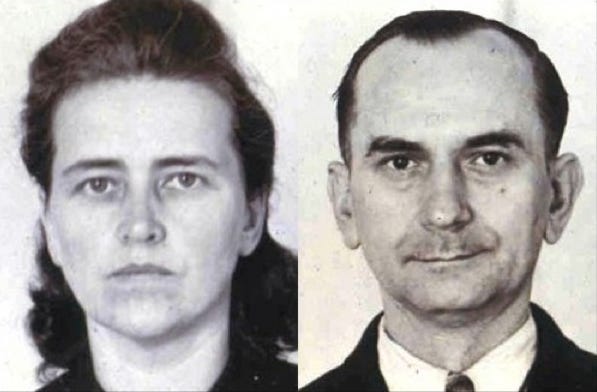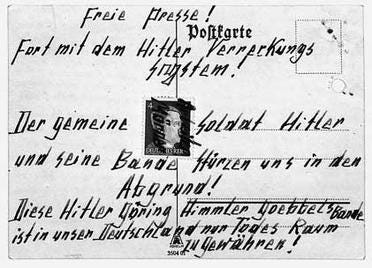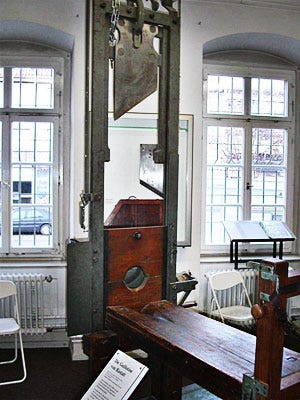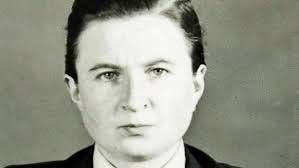When it comes to resisting the Nazi regime there are many documented large examples such as the Stauffenberg July plot, the work of Admiral Canaris, the Kreisau circle and the White Rose but there were smaller symbols of resistance, some even by mere existence is enough to offend the state. The Nazi regime saught to infect every apparatus of the German state and turn it into an extension of the party’s will and set up anti-dissident measures. Here follows two examples of resistance and why they are just as important as placing a bomb at Hitler’s feet.
Freedom of speech and the ability to criticise a government, a monarch, a President and a regime is fundamental to any healthy democracy (although freedom of speech does come with temperance and not include misogyny, racism &tc) and might be something we take for granted. Or at least used to…
Years ago I bought a book called “Alone in Berlin” by Hans Fallada and.. its’ easier to write the blurb out so;
Otto, an ordinary German living in a shabby apartment block, tries to stay out of trouble under Nazi rule. But when he discovers his only son has been killed fighting at the front he’s shocked into an extraordinary act of resistance, and starts to drop anonymous postcards attacking Hitler across the city. If caught, he will be executed.
Soon this silent campaign comes to the attention of ambitious Gestapo inspector Escherich and a murderous game of cat-and-ouse begins. Whoever loses pays with their life.
This is the story of a man quietly resisting a despotic regime leaving messages of resistance but as I leafed through the book there was a section at the end about the true story of Otto and Elise Hampel and their resistance to the Reich.
Otto (b. 1897) and Elise (b. 1903) were a working class couple who lived in Berlin through the 1930s (having married in 1935) and into the Second World War where Otto worked at a factory whilst Elise was a domestic servant and member of the National Socialist Women’s league and lived a quiet existence like so many other Berliners. Despite the invasion of Nazism into every facet of life in Germany during the mid 1930s there were many who paid it lip service and just tried to live their daily lives, which were hard enough as it was.
Unlike the Scholls and White Rose the Hampel’s move to resist was not based on an intellectual objection to the regime or its various organs but by an event that deeply effected them personally - the death of Elise’s brother during the invasion of France in 1940.
The resistance was simple, it was non invasive and non violent and took the form of postcards left in public areas and posted through letterboxes urging civil disobedience.
Free Press!
Away with the worst of Hitler's corruption
The common soldier Hitler and his allies are dragging us into the abyss! These Hitler, Göring, Himmler, and Goebbek allies are being allowed to make our Germany a place of death. (I admit my translation might be a bit off but this is the general jist)
Around 287 postcards were distributed in a period of two years with the German Police becoming frustrated with finding the culprits and handing the case over to the Gestapo. They were soon caught following denouncements including one from Otto’s supervisor. Once captured in October 1942, Otto reportedly told the Gestapo that he was pleased to protest the party. Despite some of the lighter “treason” in the cards, like the one above, they were further guilty of treason by urging the readers not to pay into the Nazi’s Winter relief fund (which was a cover to help pay for the War in Russia), refusing military service and overthrowing of the Nazi regime. They were charged under the Wehrkraftzersetzung, a law brought in in 1938 to try and quell criticism of the regime especially during time of war by extending military law to all civilians in a total war setting. They were also charged with preparing High treason and it all looked like their days would be numbered just by these charges.
They were brought before the People’s Court and the notorious Judge Roland Freisler, where they were found guilty and executed by guillotine in April 1943 at Plotzensee prison. The judiciary, usually supposed to be upholders of the law and neutral politically were headed by fanatics like Freisler which meant that if you were brought before a jedge your guilt was already assured. This can be seen in the purges after July 1944 where some Germans were tried, found guilty and executed because of guilt by association or in the case of Helmuth Graf von Moltke, a charge was invented by Freisler whilst the accused were in the stand. Basically for discussing a new Germany after Hitler had fallen, von Moltke was clearly guilty of treason and was hanged on 11th January 1945 at Plotzensee.
The German state also operated a couple of other approaches to suppress these sort of activities which included the Nacht und Nebel approach which was making people disappear into the night and fog. Any one who was actively resisting the regime in occupied territories or assisting resistance forces should be arrested in the middle of the night and immediately shipped to Germany for liquidation or incarceration in a Concentration Camp often without due process and leaving families unaware of their fate. By 1944 6639 prisoners were held as Nacht und Nebel prisoners.
The Gestapo also had to rely on informants and citizens relaying suspicions and information back to them regarding behaviours and outside appearances. These could be suspicions of neighbours (sometimes a way to curry favour and also pass on grudges) as well as “subversive” behaviours. Ilse Totzke was reported repeatedly for her activities including not giving the formal Nazi salute, refusing to give up friendships with “undesirables” and that there were suspicions that the middle aged lady who lived on her own and showed no interest in men must be a lesbian. She was repeatedly brought in and interrogated by the Gestapo and eventually threatened with a one way ticket to a Concentration Camp unless she conformed. Ilse managed to get to the Swiss border with Ruth Basinski, a Jewish citizen who was awaiting deportation, and attempted to cross in February 1943. On their second attempt they were both caught and sent to Concentration Camps with Ilse going to Ravensbruck.
I have been considering fleeing Germany for quite some time as I do not feel well under Hitler's rule. In particular, I have found the Nuremberg Laws to be incomprehensible and this is also the reason why I continued to maintain contact with the Jews who were my acquaintances - Ilse Totzke from her interrogation
These are just two small acts of defiance against a state that wanted to dominate everything and have an unquestioning obedience to their “truth” and ideals and are often overshadowed by larger stories like the Scholls or the Stauffenberg plot.
Also, and I don’t want to get too political, but sometimes when I listen to the news I think of these two cases. If you find yourself in a country - especially a western free democracy, and you hear of arrests by non-uniformed officers without warrants or demanding searches and seizures, your freedom of speech to criticize a President or government curtailed or people being punished for doing so, lifestyle choices that don’t effect anyone else’s liberties being legislated against or maligned, Judiciary rulings being too political or completely ignored by the Executive branch of a government, deportations without due process… I think questions need to be asked.






The Hampels story Alone in Berlin was also made into a film in 2016
https://www.imdb.com/title/tt3026488/
It's worth remembering over 300 thousand German civilians died during the Third Reich, murdered by the Nazis